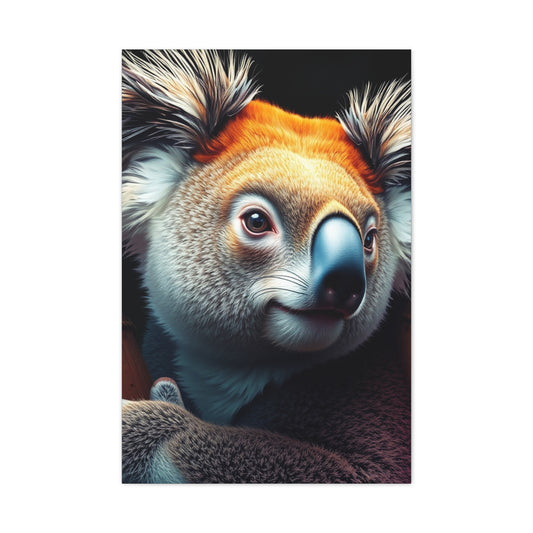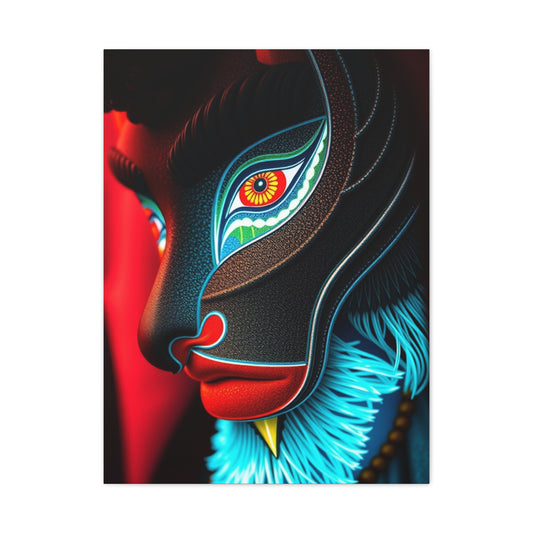Empty walls in a home are often overlooked, yet they hold incredible potential for artistic expression and personal storytelling. A blank wall can feel uninspiring or even sterile, but it is also a canvas waiting for creativity. Gallery walls have become an essential way to transform these plain surfaces into visually captivating focal points. Unlike a single painting or photograph, a gallery wall allows multiple elements to coexist, providing depth, texture, and character to a room. The beauty of a gallery wall lies in its versatility and adaptability. You are not confined to traditional rules of symmetry or uniformity, which means every wall can be uniquely tailored to your style and preferences.
The first step to creating a gallery wall is selecting the right wall. Not every empty surface is ideal, but most walls offer some form of opportunity. Consider walls in the living room, bedroom, hallway, or even above furniture such as sideboards, sofas, or beds. A wall that naturally draws attention, or one that feels barren compared to the rest of the room, is usually perfect for a gallery display. Windows, doors, and other fixtures may influence your layout, but they can also serve as inspiration, encouraging creativity in arranging frames, mirrors, and decorative objects around them. A gallery wall does not require a ceiling-to-floor blank space; even small patches of wall can be transformed into stunning visual arrangements with careful planning.
Once the wall is chosen, the next step is determining a theme or concept. Themes can range from colour palettes to subject matter, ensuring cohesion across all elements. Some people prefer minimalist gallery walls with a monochromatic scheme and simple frames, while others enjoy eclectic styles that mix photographs, prints, mirrors, and decorative objects. Establishing a theme is crucial because a gallery wall involves multiple pieces; without a common thread, the display can appear chaotic or cluttered. A unified concept binds diverse elements together, creating a visually harmonious and aesthetically pleasing composition.
Frameless prints and mirrors offer a sleek and modern approach to gallery walls. This technique emphasizes clean lines and uncluttered surfaces, making the wall feel spacious and contemporary. Frameless canvases allow artwork and photography to take centre stage without the distraction of ornate borders. Mirrors, especially when arranged in matching shapes and sizes, add depth and reflect light, making a room feel brighter and more expansive. Combining these elements can create a balanced gallery wall that is both functional and artistic. For instance, placing a cluster of small frameless canvases around a larger mirror can create a focal point that draws the eye and enhances the overall aesthetic of the room.
Gallery walls above furniture surfaces like sideboards or consoles are particularly effective. The surface below the gallery provides an additional layer of visual interest. Decorative objects, vases, or small sculptures can be strategically placed to complement the arrangement above. This combination of horizontal and vertical elements creates a dynamic and visually engaging display. Balancing the size and scale of objects on the sideboard with the frames and prints above ensures that the gallery wall does not feel top-heavy or disproportionate. Small touches like books, plants, or trays can add texture and variety while maintaining cohesion with the overall theme.
The arrangement of frames and objects is an essential aspect of gallery wall design. While symmetry can create a clean and formal appearance, unaligned or asymmetrical arrangements often feel more organic and playful. Mixing different shapes and sizes creates visual interest and encourages the eye to move across the wall, discovering new details. Planning the layout by arranging pieces on the floor or using paper templates on the wall helps avoid mistakes and ensures a balanced composition. The spacing between frames also influences the overall look; uniform gaps produce a polished feel, while varying distances create a more eclectic and casual appearance.
Incorporating personal photographs is a timeless way to make a gallery wall meaningful. Family portraits, vacation snapshots, or candid moments bring warmth and personality to the space. Using similar frames or a consistent colour scheme helps integrate these personal touches into the larger design. Beyond photographs, prints, artwork, and illustrations can express interests, hobbies, or artistic tastes. Combining personal memories with curated art pieces allows the gallery wall to serve both as a decorative element and a narrative of personal experiences and memories.
Functional elements can also be integrated into gallery walls. Wall clocks, shelves, and bulletin boards provide practicality while enhancing the visual appeal. For example, using a large clock as a central piece and arranging photographs or prints around it creates a striking and useful display. Floating shelves allow for three-dimensional objects to be added to the gallery, further enhancing texture and depth. These functional touches make the gallery wall more than just a visual feature; they become interactive, adding convenience and utility to the aesthetic appeal.
The role of colour in a gallery wall is significant. Neutral tones such as black, white, or grey create a minimalist and cohesive look, allowing artwork or photographs to stand out. Conversely, vibrant colours and bold contrasts can make the wall a dramatic focal point. Harmonizing the wall colours with the room’s overall palette ensures that the gallery wall complements rather than clashes with existing decor. Accents of metallics, pastels, or earthy tones can add personality without overwhelming the space. Colour choices should reflect personal taste while enhancing the harmony and balance of the room.
Lighting is another critical consideration. Proper illumination highlights artwork, enhances colours, and draws attention to key pieces. Natural light can beautifully illuminate a gallery wall, but artificial lighting, such as wall-mounted sconces or adjustable spotlights, allows for precise control. Layered lighting ensures that the gallery remains visible and engaging at different times of day. Careful placement of light sources minimizes shadows and glare, creating a display that is both visually appealing and practical for long-term enjoyment.
The choice of materials adds texture and interest. Canvas, wood, metal, and glass offer distinct visual and tactile qualities. Canvas provides softness and a classic feel, wood frames add warmth and tradition, metal creates a sleek contemporary vibe, and glass elements introduce reflection and depth. Mixing materials judiciously can produce a gallery wall that feels dynamic and sophisticated. However, maintaining consistency in style or theme is essential to prevent a disjointed or cluttered appearance. Each material contributes to the sensory experience of the wall, making it not only visually attractive but also engaging to the touch and perception.
Gallery walls can be extended beyond the traditional living room. Bedrooms, hallways, kitchens, and even bathrooms offer opportunities for creative displays. Placing artwork above the bed, alongside kitchen cabinets, or along corridor walls transforms ordinary spaces into areas of interest and personality. In smaller rooms, scaled-down gallery walls using compact frames or small prints can achieve the same visual impact without overwhelming the space. Choosing the right wall for the right space ensures that the gallery enhances both functionality and aesthetics throughout the home.
For children’s rooms, gallery walls offer opportunities for personalization and creative expression. Kids can display artwork, school projects, or themed decorations that reflect their evolving personalities. Incorporating fun objects, playful prints, and vibrant colours makes the wall engaging and interactive. Gallery walls in children’s spaces can evolve, allowing them to curate their own displays, fostering independence and creativity. This approach ensures that the walls are not only decorative but also educational and inspiring.
DIY enthusiasts often find gallery walls appealing because they offer endless customization opportunities. Unlike a single statement piece, gallery walls allow for experimentation with layout, style, and content. Whether using photographs, prints, mirrors, decor objects, or functional items like clocks and shelves, every element can be adjusted or replaced. This flexibility makes gallery walls an evolving feature, capable of changing with seasons, trends, or personal tastes. DIY gallery walls also provide a sense of accomplishment, as each piece is intentionally chosen, arranged, and displayed to reflect personal vision.
Gallery walls transform empty, uninspiring walls into vibrant displays of personality, creativity, and artistry. They offer flexibility in theme, arrangement, materials, and functionality, making them suitable for any room in the house. Whether minimal and modern or eclectic and playful, a gallery wall turns a blank space into a focal point that communicates style, memories, and identity. By selecting the right wall, establishing a cohesive theme, arranging frames thoughtfully, and incorporating personal touches, anyone can create a gallery wall that enhances both the visual appeal and emotional warmth of their home. This artistic approach not only fills empty spaces but also fosters creativity, personal expression, and engagement with one’s living environment. Gallery walls prove that even the simplest walls can hold endless possibilities when treated as canvases for imagination and inspiration.
Creative Gallery Wall Layouts and Frameless Print Ideas
Gallery walls are a perfect way to combine creativity and personal expression, and one of the most exciting aspects is exploring unique layouts. The arrangement of frames, prints, mirrors, and decorative objects can dramatically change the look and feel of a wall. Creative gallery wall layouts allow you to experiment with symmetry, asymmetry, grids, clusters, or organic arrangements, providing endless possibilities to suit your taste and space. One of the first decisions in designing a gallery wall is choosing a layout that complements the room while reflecting your personality.
Symmetrical layouts provide a structured and formal appearance. They create balance by arranging frames of similar size, shape, and colour in orderly rows and columns. This approach works exceptionally well in living rooms, dining areas, and entryways where a polished and cohesive look is desired. Symmetry also helps to create a sense of calm and order, making the wall feel intentional and thoughtfully curated. Uniform spacing between frames enhances this effect, ensuring that the arrangement appears clean and organized rather than cluttered.
Asymmetrical layouts, on the other hand, bring a sense of energy and playfulness. They mix frames of varying sizes, shapes, and orientations, creating a dynamic visual flow across the wall. Asymmetrical arrangements work well for eclectic interiors, children’s rooms, or creative spaces where a relaxed and spontaneous vibe is desired. Despite the apparent randomness, achieving balance is key. You can accomplish this by distributing visual weight evenly, placing larger frames strategically, or using repeating colours and shapes to create cohesion. Asymmetry allows for flexibility, making it easier to add or replace pieces over time without disrupting the overall harmony.
Clustered arrangements are a popular choice for those looking to make a statement with a gallery wall. Frames are grouped closely together, often overlapping slightly, creating a dense and visually engaging display. This technique works particularly well on smaller walls or above furniture surfaces like sofas and sideboards. Clustering frames encourages experimentation with textures, colours, and materials, allowing you to combine photographs, artwork, mirrors, and small decor objects in one cohesive composition. A cluster can also serve as a focal point in a room, drawing attention and sparking conversation.
Grids are another creative layout option, especially for modern and minimalist interiors. By arranging identical or similar frames in a grid pattern, you achieve a clean, geometric look that emphasizes uniformity and repetition. Grids work well with prints of the same size, colour scheme, or subject matter, creating a visually striking and harmonious arrangement. They are particularly effective for showcasing photography, abstract prints, or small artworks in a controlled and elegant manner. The simplicity of a grid allows each piece to shine individually while contributing to a collective aesthetic.
Frameless prints are an increasingly popular trend in gallery wall design. These prints offer a sleek and modern look, eliminating the distraction of traditional frames and allowing the artwork or photograph to take center stage. Frameless prints work exceptionally well in contemporary spaces, providing a clean and minimalistic appearance. They can be used alone or combined with framed pieces, mirrors, and decorative objects to create layered, textural compositions. Using multiple frameless prints in identical sizes or complementary shapes helps establish visual unity while maintaining a modern, open feel.
Mixing frameless prints with mirrors and decor collectibles can elevate a gallery wall, creating a sense of depth, dimension, and reflection. Mirrors strategically placed among prints add light and visual interest, making the room feel larger and more vibrant. Collectibles, small sculptures, or decorative objects integrated into the gallery add personality and variety, transforming the wall from a static display into a multidimensional focal point. This approach allows for a combination of functional, decorative, and artistic elements in a single cohesive layout.
Gallery walls above furniture, such as sideboards or consoles, are particularly effective for combining decor with practicality. The furniture surface below the gallery provides an opportunity to display complementary objects, such as vases, books, or small sculptures, which enhance the overall composition. Balancing the size and scale of objects on the furniture with the frames above creates a harmonious visual hierarchy. This approach is ideal for living rooms or dining areas, where the gallery wall and the furniture together form a complete design statement.
Floating shelves are a versatile option for gallery wall layouts. They allow for layering of prints, photos, and decor objects, providing depth and flexibility in the display. You can easily change the arrangement by swapping items or adjusting their positions, making it simple to refresh the look of your gallery wall over time. Floating shelves are also excellent for combining framed prints with three-dimensional objects like plants, candles, or small sculptures, adding texture and interest to the composition.
Incorporating large statement pieces into a gallery wall can anchor the arrangement and provide a focal point. A single oversized print, mirror, or artwork can serve as the centerpiece, with smaller frames and objects arranged around it. This approach is particularly effective in rooms with high ceilings or large empty walls, where a dramatic visual impact is desired. The surrounding pieces should complement the central element in style, colour, or theme to maintain cohesion while enhancing visual interest.
Gallery walls around functional elements like flat-screen TVs or wall clocks create harmony between utility and aesthetics. Arranging frames and prints around a TV can integrate it seamlessly into the wall, transforming it from a functional device into part of the artistic composition. Similarly, using a large clock as a central element and surrounding it with photos or prints combines practicality with creativity, making the gallery wall both engaging and functional. These designs demonstrate how gallery walls can adapt to modern living while enhancing the overall visual appeal of the room.
Personalization is a crucial aspect of creative gallery wall layouts. Family photos, travel memories, and personal artwork add warmth and individuality to the display. Mixing personal items with curated artwork or decorative prints allows the gallery wall to tell a story, reflecting the personality and experiences of the household. It is important to maintain a visual balance by considering frame styles, colour schemes, and spacing, ensuring that the wall feels cohesive and intentional rather than chaotic.
In children’s rooms, gallery walls offer an opportunity for playful and educational displays. Children’s artwork, craft projects, and themed prints can be arranged creatively, encouraging self-expression and a sense of ownership over their space. Gallery walls in kids’ rooms can evolve, allowing children to update the display as they grow, ensuring that the space remains dynamic, engaging, and personalized. Incorporating vibrant colours, whimsical prints, and fun decor objects enhances the playful atmosphere while fostering creativity.
Lighting plays a key role in enhancing the impact of gallery walls. Proper illumination highlights the artwork, enhances colours, and creates visual depth. Adjustable wall-mounted lights, picture lights, or spotlights allow for precise control, ensuring that each element is showcased effectively. Natural light can also be leveraged to illuminate the wall during the day, while ambient lighting enhances its appeal in the evening. Thoughtful lighting ensures that the gallery wall remains a focal point, attracting attention and creating a welcoming atmosphere.
Textures and materials contribute to the richness of gallery wall layouts. Mixing canvas, wood, metal, and glass adds dimension and tactile interest. Canvas provides softness, wood adds warmth, metal offers sleek modernity, and glass introduces reflection and light. Combining materials thoughtfully ensures that the wall feels dynamic without appearing disjointed. Each element should complement the others, creating a harmonious balance that is visually appealing and engaging to the senses.
DIY gallery walls are an excellent way to experiment with layouts, frames, and decor elements. They allow for flexibility in design, enabling homeowners to adjust arrangements, add new pieces, or remove items as desired. Planning the layout on the floor or using paper templates on the wall helps visualize the final arrangement and avoid mistakes. DIY approaches encourage creativity, personalization, and a sense of accomplishment, making the process as enjoyable as the finished display.
Gallery wall layouts can also be adapted to different room types. In bedrooms, arranging prints above the bed or dresser creates a focal point and enhances the overall aesthetic. Hallways and corridors can be transformed with smaller, elongated gallery walls that guide the eye along the space. Kitchens and dining areas benefit from gallery walls that incorporate functional elements, such as floating shelves or display racks, combining practicality with artistic expression. Choosing the right wall and layout ensures that the gallery enhances the room’s function and style.
Creative gallery wall layouts and frameless print ideas provide endless possibilities for transforming empty walls into vibrant, personalized spaces. Whether using symmetrical grids, asymmetrical clusters, floating shelves, or oversized statement pieces, the arrangement of frames, prints, mirrors, and decor objects defines the character of the wall. Incorporating personal items, functional elements, and diverse materials enhances visual interest while maintaining cohesion. Thoughtful planning, experimentation, and attention to detail ensure that every gallery wall is a unique reflection of taste, creativity, and personality. By exploring these creative layouts and frameless print concepts, empty walls become dynamic canvases that breathe life, depth, and individuality into any home environment.
Integrating Functional Elements Like Clocks and TVs into Gallery Walls
Gallery walls are often thought of purely as decorative features, but integrating functional elements like clocks, flat-screen TVs, or shelves can transform them into both practical and visually striking installations. Combining art with utility creates walls that are not only aesthetically pleasing but also serve a purpose in everyday life. These types of gallery walls merge creativity with function, allowing homeowners to make the most of their space while maintaining a cohesive and stylish look.
Large clocks are an innovative way to add functionality to a gallery wall. Skeleton clocks or oversized timepieces can become the central element of a display, around which photographs, artwork, or decorative objects are arranged. This approach provides a focal point while still allowing for personal expression. Consistency in frame colour and style around the clock helps maintain harmony, ensuring that the gallery wall does not appear chaotic or cluttered. The clock becomes both a utility item and a statement piece, adding personality and flair to living rooms, dining areas, or even hallways.
Flat-screen TVs can also be incorporated seamlessly into gallery walls. Instead of dominating the space as a lone, functional object, the TV becomes part of a curated display. Arranging photographs, framed artwork, or small mirrors around the television helps it blend with the wall and reduces the visual impact of the screen. Floating shelves above or below the TV add additional surfaces for decor items, creating layers and depth in the composition. This strategy transforms a necessary electronics installation into an artistic centerpiece, making it a natural part of the room’s interior design.
The placement of functional elements should be strategic to achieve balance. A central element like a clock or TV can anchor the arrangement, while surrounding frames and objects can vary in size and orientation to create visual interest. For instance, a large TV can be flanked by medium-sized prints in a grid or staggered formation, while smaller objects or decorative accents fill in the remaining gaps. Careful consideration of spacing, scale, and symmetry ensures the gallery wall is visually balanced and harmonious.
Shelves, floating or built-in, provide another layer of functionality to gallery walls. They allow for the display of three-dimensional objects such as vases, books, plants, or collectibles. Shelves can also serve practical purposes, holding everyday items in an organized and stylish manner. Integrating shelves into a gallery wall allows the display to have both vertical and horizontal dimensions, enhancing depth and making the wall more dynamic. Adjustable shelving offers flexibility, letting homeowners rearrange objects to keep the display fresh over time.
Functional gallery walls are particularly effective in living rooms, where both entertainment and socialization occur. Clocks, TVs, and shelves can coexist with photographs, artwork, and mirrors, creating a multifaceted display that is both practical and engaging. For example, a large clock can hang above a sideboard, surrounded by framed family photos and decorative objects. The sideboard itself provides additional surface area for vases, candles, or small sculptures, enhancing the visual balance of the wall. Such arrangements make a living space feel curated, personalized, and purposeful.
Lighting plays an important role in gallery walls that incorporate functional elements. Proper illumination ensures that both decorative and practical items are visible and highlighted appropriately. Picture lights, wall-mounted sconces, or adjustable spotlights can enhance key pieces like clocks, artwork, or shelves. Natural light can also be leveraged to showcase the gallery during the day, adding warmth and dimension to the display. Layered lighting ensures that functional elements remain visible while accentuating the artistic components of the wall.
Consistency in style and materials is key to integrating functional elements effectively. Frames, clocks, shelves, and decorative objects should share complementary colours, textures, or finishes to create cohesion. For instance, black metal frames paired with a black skeleton clock and floating black shelves produce a modern, unified look. Similarly, wooden frames, a wooden clock, and wooden shelving can create warmth and harmony in more traditional or rustic interiors. Maintaining consistency prevents the gallery from appearing disjointed, despite the combination of functional and decorative elements.
Gallery walls around TVs benefit from careful planning of height and viewing angles. The TV should be positioned at an optimal eye level for comfortable viewing, while surrounding frames and objects are arranged to complement the screen without obstructing it. Floating shelves above or below the TV provide surfaces for decor and functional accessories, while still allowing easy access to the screen and controls. This approach ensures the gallery wall is both aesthetically pleasing and user-friendly.
Clocks offer versatility in gallery walls because they are available in a range of sizes, styles, and materials. From oversized wall clocks to minimalist designs, these timepieces can serve as central focal points or subtle accents. They can be paired with framed artwork, mirrors, and small decor objects to create a balanced display. Using a single large clock or multiple smaller clocks can also reinforce a theme or visual rhythm, adding cohesion to a gallery wall composed of various elements.
Combining artwork with functional elements encourages a multidimensional experience. Textures, colours, and forms interact, creating a visually engaging wall that feels curated and intentional. For example, placing a metal-framed clock next to a canvas print adds contrast, while incorporating a small mirror or glass shelf introduces reflection and light. These combinations make the gallery wall dynamic, interactive, and visually stimulating, appealing to both practical and aesthetic sensibilities.
In bedrooms, functional gallery walls can include clocks, small shelving, or wall-mounted storage alongside prints and photographs. Arranging artwork above the bed, with functional pieces like a clock or shelf nearby, creates both a decorative focal point and a practical solution for daily routines. The display can be tailored to the room’s colour palette and personal style, ensuring that functional elements blend seamlessly with the decorative components. Functional gallery walls in bedrooms enhance both convenience and visual appeal, making them ideal for personal spaces.
Hallways and corridors also benefit from functional gallery walls. A clock placed centrally in a narrow corridor can provide a practical timepiece while surrounding frames or mirrors add interest and dimension. Floating shelves can hold keys, small plants, or decorative items, transforming transitional spaces into stylish and purposeful areas. This approach maximizes the utility of often-overlooked walls while contributing to the overall design and ambiance of the home.
DIY functional gallery walls are accessible and customizable. Homeowners can experiment with layouts by arranging frames, clocks, TVs, or shelves on the floor before committing to wall placement. Paper templates or painter’s tape can help visualize spacing and alignment, ensuring the final display is balanced and cohesive. DIY approaches allow flexibility in design, making it easy to swap or add pieces over time. This adaptability ensures the gallery wall can evolve with changing tastes, needs, and seasonal decor.
Functional elements can also inspire thematic gallery walls. A travel-themed wall can feature maps, photographs, and clocks showing different time zones. A music-themed wall might incorporate framed album covers, instruments, or decorative records alongside mirrors or small shelves. The functional components become part of the narrative, adding purpose while enhancing the visual story told by the wall. Thematic integration encourages creativity and provides a unified concept that binds diverse elements together.
Maintaining balance in functional gallery walls is essential. Central elements like clocks or TVs should anchor the display, while surrounding frames and decor provide support without overpowering the focal point. Attention to scale, proportion, and alignment ensures that the gallery wall feels harmonious and visually appealing. Grouping smaller frames, decor objects, or mirrors strategically around a central element creates rhythm and flow, making the display engaging without feeling chaotic.
Gallery walls that integrate functional elements encourage interaction and engagement. They are not just visually appealing but also practical, providing surfaces for decor, tools, or entertainment. These walls demonstrate how design can be both purposeful and expressive, allowing homeowners to enjoy both aesthetic pleasure and utility in one cohesive display. The combination of form and function elevates the wall from a simple backdrop to a dynamic, multifunctional feature of the home.
Functional gallery walls that incorporate clocks, TVs, shelves, and other practical items transform empty walls into spaces of creativity, utility, and personality. Strategic placement, thoughtful planning, and attention to style, materials, and lighting ensure a harmonious integration of functional and decorative elements. Whether in living rooms, bedrooms, hallways, or kitchens, functional gallery walls maximize both aesthetic appeal and practicality. By blending artwork with timepieces, electronics, and storage solutions, these gallery walls become versatile, engaging, and visually dynamic, proving that utility and beauty can coexist seamlessly on any wall in the home.
Full-Room Art Gallery Walls and Eclectic Bedroom Arrangements
Gallery walls are not limited to single walls or small corners; they can extend across entire rooms, transforming living spaces into immersive art experiences. Full-room gallery walls allow homeowners to showcase extensive collections of artwork, photography, mirrors, and decorative objects, creating a cohesive environment that expresses personality and creativity. This approach is ideal for art enthusiasts, collectors, and anyone looking to make a bold statement in their home while maintaining a visually engaging and dynamic space.
The key to creating a full-room gallery wall is consistency in theme or style. Even when displaying a large number of pieces, having a unifying factor, such as a common colour palette, frame style, or subject matter, ensures the display remains cohesive and visually harmonious. Without some level of consistency, a full-room gallery can quickly become overwhelming or chaotic. Establishing a theme provides structure while still allowing flexibility in the arrangement of individual pieces. Themes can vary widely, including monochromatic schemes, abstract art collections, photography series, or a combination of prints and personal mementos.
Bedrooms offer unique opportunities for gallery walls, especially above beds or along walls adjacent to furniture. Bedroom gallery walls can combine personal photographs, framed prints, mirrors, and decorative objects to create a relaxing and inspiring environment. Splitting a single print into multiple frames of different shapes and sizes can create an eccentric and artistic arrangement. This unaligned approach adds personality and interest while avoiding the rigidity of symmetrical layouts. Bedroom gallery walls often incorporate softer colours and textures to maintain a serene atmosphere, ensuring the space remains conducive to rest.
For those with eclectic tastes, combining various styles, shapes, and materials on a bedroom gallery wall can produce a visually stimulating and personalized display. Mixing frames in wood, metal, or acrylic, combining photographs with canvas prints, and integrating mirrors or three-dimensional objects creates a dynamic wall that reflects individuality. While eclectic arrangements may appear random, careful consideration of spacing, balance, and colour coordination ensures the display remains visually appealing rather than cluttered. Eclectic gallery walls are perfect for expressing creativity, showcasing diverse interests, and adding character to a bedroom.
Full-room gallery walls can also include multiple walls within a single space, each dedicated to a different type of display. For example, one wall may feature photographs, another may showcase artwork, while a third could include mirrors or three-dimensional decorative objects. Despite the variety, maintaining a unifying theme or colour scheme across the room ensures cohesion. This approach transforms the entire space into an immersive visual experience, where every wall contributes to the overall aesthetic while highlighting individual pieces.
Incorporating large statement pieces in full-room gallery walls adds focus and depth. Oversized canvases, mirrors, or art installations can serve as anchor points around which smaller frames and objects are arranged. These central pieces provide a sense of structure, guiding the viewer’s eye and creating rhythm across the room. Large elements also balance multiple smaller items, preventing the space from feeling chaotic and ensuring a harmonious composition throughout the room.
Lighting is essential in full-room gallery walls to highlight individual pieces and create ambiance. Track lighting, picture lights, and wall-mounted sconces allow homeowners to illuminate key elements while adding depth and dimension to the display. Natural light can enhance the colours and textures of artwork, but artificial lighting ensures consistent visibility regardless of time of day. Layered lighting strategies allow for flexibility, emphasizing different areas of the gallery as desired and creating an inviting and visually engaging environment.
Floating shelves, ledges, and display racks offer practical solutions for full-room gallery walls. They provide surfaces to showcase three-dimensional objects such as sculptures, plants, vases, or decorative items. These elements add texture and depth to the gallery, making the walls more interactive and visually dynamic. Floating shelves also allow for easy updates or seasonal changes, giving homeowners flexibility to refresh the display over time. In bedrooms, ledges above dressers or desks can serve both decorative and functional purposes, enhancing the overall aesthetic while supporting daily routines.
Personalization is particularly important in bedrooms and full-room gallery walls. Including personal photographs, travel memories, art created by family members, or sentimental objects adds warmth and meaning to the display. Combining personal items with curated artwork ensures that the gallery reflects individuality and tells a story unique to the household. The personal touch transforms the wall from a mere decorative feature into a meaningful space that evokes memories and emotion, creating an intimate and engaging environment.
Eclectic gallery walls often thrive in spaces that embrace a mix of contemporary and traditional design elements. For example, pairing modern prints with antique frames, abstract artwork with realistic photography, or metal frames with wooden ones creates a layered and textured aesthetic. This approach allows homeowners to showcase diverse interests while maintaining visual cohesion through colour, spacing, or thematic consistency. Eclectic gallery walls encourage experimentation and creativity, making them ideal for artistic or adventurous interiors.
Maintaining balance in full-room gallery walls is crucial. Even with eclectic or varied pieces, visual weight should be distributed evenly across the space. Larger or darker pieces can anchor the arrangement, while smaller or lighter items fill in gaps to create a harmonious flow. Attention to height, spacing, and alignment ensures that the room feels curated and intentional rather than cluttered or haphazard. Visual balance allows each piece to stand out while contributing to the overall aesthetic of the gallery wall.
Gallery walls in bedrooms can also incorporate functional elements like clocks, shelves, or wall-mounted lighting. Clocks add practicality, shelves provide surfaces for personal items or decor, and wall-mounted lights enhance the visibility and impact of individual pieces. Integrating functional elements ensures that the gallery wall is not only visually appealing but also serves everyday needs, creating a space that is both beautiful and practical. Functional additions blend seamlessly with decorative pieces, maintaining cohesion while enhancing usability.
Children’s bedrooms offer unique opportunities for eclectic gallery walls. Kids’ artwork, school projects, toys, and themed decorations can be displayed creatively, reflecting their evolving personalities and interests. Arranging colorful prints, DIY crafts, or playful objects creates an engaging and stimulating environment. Gallery walls in children’s spaces can evolve, allowing young occupants to curate their own displays and express their creativity. By encouraging personalization, these walls foster independence and imagination while making the room more vibrant and dynamic.
Gallery walls extending across multiple walls in a bedroom or living space create a sense of continuity and immersion. Even when each wall has a slightly different focus or theme, maintaining a consistent colour palette, frame style, or artistic tone binds the elements together. This approach transforms the room into a unified artistic environment, where each wall contributes to the overall story while highlighting individual pieces. Full-room gallery walls provide a sense of depth, richness, and intentionality, elevating the home’s interior design.
DIY full-room gallery walls are accessible and customizable. Planning the layout on the floor or using paper templates on the walls helps visualize the final arrangement before installation. This process allows homeowners to experiment with placement, spacing, and composition, ensuring that each piece contributes to a harmonious overall design. DIY gallery walls encourage creativity, provide a sense of accomplishment, and allow the display to evolve, keeping the room dynamic and engaging.
Thematic gallery walls can enhance cohesion in full-room or bedroom arrangements. Themes such as nature, travel, abstract art, or family memories provide a unifying concept that ties diverse pieces together. Even when using eclectic frames, materials, and objects, a common theme ensures the display remains aesthetically pleasing and visually coherent. Themes also make it easier to select new pieces in the future, ensuring that additions complement the existing gallery wall without disrupting the overall composition.
Textures, materials, and finishes contribute significantly to the impact of full-room gallery walls. Canvas, wood, metal, glass, and fabric frames add dimension and visual interest. Combining materials thoughtfully prevents monotony and creates a layered aesthetic that feels dynamic and rich. Each texture and finish interacts with light and surrounding decor, enhancing the overall sensory experience of the room. Thoughtful material choices ensure that the gallery wall remains visually stimulating while harmonizing with the room’s design.
Full-room gallery walls and eclectic bedroom arrangements offer expansive opportunities for creative expression, personalization, and visual storytelling. By extending gallery walls across entire rooms, homeowners can create immersive environments that reflect their personality, interests, and artistic vision. Consistency in theme, colour palette, and style ensures cohesion, while eclectic arrangements, functional elements, and diverse materials add depth, texture, and personality. Whether in bedrooms, living spaces, or children’s rooms, full-room gallery walls transform ordinary spaces into dynamic, engaging, and meaningful environments. They are a celebration of creativity, individuality, and the power of design to elevate everyday life, making the home both beautiful and inspiring.
Personalised Bedroom Gallery Walls and Kid-Friendly Displays
Bedrooms are deeply personal spaces where comfort, style, and personality converge. Creating gallery walls in bedrooms allows homeowners to showcase their unique tastes while transforming otherwise plain walls into vibrant, engaging focal points. Personalised bedroom gallery walls can include family photographs, travel memories, artwork, decorative prints, and even functional elements like clocks or shelves. The key to success is designing a layout that balances aesthetic appeal with a sense of intimacy and calm suitable for a bedroom environment.
One effective approach is to create a gallery wall above the bed. This area naturally draws attention and serves as a canvas for creativity. Using a combination of prints, photographs, mirrors, and three-dimensional decor objects can add depth and interest. Multiple frames of different sizes and shapes can be arranged in an unaligned, slightly asymmetrical layout to create a relaxed, artistic atmosphere. Splitting a single piece of artwork into multiple frames is another popular technique, producing a visually engaging arrangement that adds sophistication while maintaining a personal touch.
Colour coordination plays a critical role in bedroom gallery walls. While bedrooms often benefit from calming, neutral tones to promote relaxation, accents of vibrant colour can add personality and visual interest. Soft pastels, muted shades, and earthy tones work well as a base, with splashes of brighter hues incorporated through artwork or decorative objects. Harmonising colours across the gallery wall ensures cohesion, even when mixing different frame styles or materials. Thoughtful colour choices prevent the display from feeling chaotic, creating a serene yet stimulating environment.
Personalisation is key to making bedroom gallery walls feel unique. Family photos, childhood memories, travel snapshots, or personal artwork create walls that tell a story. Integrating these personal touches into the overall design ensures that the space reflects individuality and evokes a sense of familiarity and comfort. Prints, sketches, or illustrations created by family members can be framed alongside professional artwork, blending personal significance with visual appeal. The gallery becomes not only a decorative feature but also a meaningful reflection of life experiences and cherished memories.
Functional elements can enhance bedroom gallery walls without compromising aesthetics. Wall-mounted clocks, small shelves, or decorative hooks can be integrated seamlessly into the design. Clocks provide utility, shelves offer surfaces for displaying small objects, and hooks can hold lightweight accessories or decorative items. These functional additions ensure that the gallery wall contributes to everyday living while remaining visually harmonious. The combination of decorative and functional elements transforms a simple wall into a dynamic and practical feature of the room.
Eclectic arrangements are particularly popular in bedrooms, allowing for creative expression and a mix of styles. Combining wooden frames, metal accents, mirrors, and canvas prints creates a textured and layered look. Even within eclectic designs, maintaining balance is essential. Larger pieces can serve as anchors, with smaller frames and objects distributed strategically to create rhythm and visual interest. This approach allows homeowners to showcase diverse tastes while ensuring the gallery wall remains cohesive and inviting.
Kid-friendly gallery walls offer a unique opportunity for creativity and personalisation. Children’s rooms can be transformed with displays that reflect their interests, hobbies, and achievements. Artwork, school projects, toys, and themed decorations can all be incorporated into playful and imaginative arrangements. Using vibrant colours, fun shapes, and interactive elements makes the gallery wall engaging for young occupants. Shelves can hold small toys, figurines, or books, adding both functionality and charm to the display.
Encouraging children to participate in designing their gallery wall fosters creativity and ownership of their space. They can choose which pieces to display, arrange frames or objects, and even create DIY decorations. This process helps children express themselves while learning about visual balance, colour coordination, and composition. A child’s gallery wall can evolve, reflecting changing interests and artistic development, ensuring that the room remains dynamic, personalized, and engaging.
Themes can unify bedroom and kid-friendly gallery walls. A common colour palette, subject matter, or frame style helps maintain cohesion, even when displaying a variety of elements. For example, a travel-themed bedroom wall can include maps, photographs, souvenirs, and artwork, creating a narrative that ties the pieces together. Similarly, a kid’s room can follow a nature, sports, or fantasy theme, with consistent colours and materials ensuring visual harmony. Themes make it easier to curate and expand the gallery over time, allowing for seamless additions without disrupting the overall design.
Lighting is crucial in enhancing bedroom gallery walls. Wall-mounted sconces, picture lights, or adjustable track lighting can highlight specific pieces, creating depth and focus. Natural light also enhances colours and textures during the day, making the gallery wall more engaging and vibrant. Layered lighting strategies provide flexibility, ensuring the display remains visually appealing and functional regardless of the time of day. Proper lighting emphasizes key elements while maintaining a warm and inviting bedroom atmosphere.
Mixing materials adds texture and dimension to bedroom gallery walls. Canvas prints, wooden frames, metal accents, mirrors, and even fabric-covered frames can coexist to create a dynamic composition. Thoughtful combination of materials ensures visual interest without overwhelming the space. Mirrors reflect light, enhancing brightness and the sense of space, while textured frames or three-dimensional objects add depth. By considering the interplay of materials, homeowners can create a gallery wall that is both visually rich and harmonious with the overall bedroom design.
Floating shelves are a versatile addition to bedroom and kid-friendly gallery walls. They allow for the layering of artwork and decorative objects, providing depth and flexibility. Shelves can be easily updated, rotated, or rearranged, making it simple to refresh the gallery over time. For children, shelves can hold toys, books, or personal creations, combining functionality with decoration. In adult bedrooms, shelves offer surfaces for small sculptures, plants, or personal memorabilia, enhancing the overall aesthetic and making the space feel curated and intentional.
Maintaining balance and proportion is essential for bedroom gallery walls. Larger pieces should be placed strategically to anchor the arrangement, while smaller pieces fill gaps and create visual flow. The spacing between frames and objects should be consistent enough to maintain cohesion, yet varied enough to avoid rigidity. Attention to scale and alignment ensures that the wall feels well-composed and aesthetically pleasing, creating a serene and inviting environment.
DIY gallery wall projects are particularly rewarding in bedrooms. Homeowners can experiment with layouts on the floor, use paper templates on the wall, or test different combinations of frames and objects before committing to permanent placement. This hands-on approach allows for creative freedom and personal expression while ensuring the final display meets both functional and aesthetic needs. DIY gallery walls can evolve, with new pieces added as interests, memories, or decor styles change, keeping the bedroom fresh and engaging.
In children’s rooms, DIY gallery walls encourage exploration and experimentation. Kids can create artwork, craft decorative pieces, or curate collections that reflect their interests. Involving children in the design process fosters creativity, independence, and a sense of ownership over their environment. Over time, the gallery can grow and change, becoming a visual record of its development and personal growth. Kid-friendly gallery walls are dynamic, playful, and educational, providing both decoration and inspiration.
Personalized bedroom gallery walls create a connection between decor and daily life. They allow homeowners to display memories, achievements, and artistic tastes while transforming the wall into a visually engaging focal point. Whether using photographs, prints, mirrors, shelves, or functional elements, the gallery wall enhances the room’s aesthetic and emotional impact. It becomes a reflection of the individual or family, making the bedroom not just a place to rest, but a space that inspires, comforts, and expresses identity.
Personalized bedroom gallery walls and kid-friendly displays provide endless opportunities for creativity, self-expression, and functional design. By combining artwork, personal photographs, decorative objects, functional elements, and thematic cohesion, homeowners can create walls that are both beautiful and meaningful. In bedrooms, these gallery walls enhance the sense of intimacy, comfort, and personal style, while in children’s rooms, they foster creativity, individuality, and engagement. Thoughtful planning, attention to balance, and careful selection of materials and layouts ensure that each gallery wall remains visually appealing, dynamic, and uniquely reflective of the occupants’ personalities. Personalized and kid-friendly gallery walls transform ordinary bedroom walls into vibrant, meaningful, and inspiring spaces that grow with the people who live in them.
Living Room and Home Bar Gallery Walls for Multifunctional Spaces
Gallery walls are not just for bedrooms or single walls; they can enhance multifunctional spaces like living rooms and home bars, combining aesthetics, personality, and practicality. A living room or home bar often serves multiple purposes: entertaining guests, relaxing after a long day, displaying cherished memories, and showcasing artwork or decor. By integrating gallery walls into these spaces, homeowners can create a dynamic environment that balances style, function, and personal expression.
One of the most popular living room gallery wall approaches is to arrange artwork, photographs, and decorative objects around a central focal point, such as a fireplace, television, or a large piece of furniture. This central element anchors the composition, while surrounding frames, mirrors, and objects create a balanced, harmonious layout. The arrangement can include symmetrical grids for a polished, formal look or asymmetrical clusters for a more eclectic and energetic feel. Attention to scale, spacing, and visual weight ensures that the wall remains cohesive and visually engaging.
Home bar gallery walls offer an exciting opportunity to blend function and creativity. In addition to displaying artwork, photographs, and decorative items, these walls can showcase barware, bottles, or collectible glasses in an aesthetically pleasing arrangement. Floating shelves or wall-mounted racks provide practical storage while enhancing the visual composition. By combining functional elements with artistic displays, a home bar gallery wall becomes both a focal point and a utilitarian feature, offering a stylish solution for entertaining spaces.
Lighting is particularly important in living rooms and home bar areas. Proper illumination highlights artwork, frames, and decorative objects while setting the right mood for the space. Track lighting, wall sconces, or picture lights can focus attention on key elements of the gallery wall, while ambient lighting from lamps or ceiling fixtures creates warmth and depth. In-home bar spaces, accent lighting on shelves or behind glassware can add drama and sophistication, turning the gallery wall into a captivating centerpiece during gatherings.
Mixing materials and textures adds richness and dimension to gallery walls in multifunctional spaces. Canvas prints, wooden frames, metal accents, mirrors, and three-dimensional objects can all coexist to create a layered, dynamic look. The combination of materials allows for visual contrast and depth, ensuring that each piece stands out while contributing to the overall harmony of the wall. Mirrors are particularly effective, reflecting light and creating a sense of openness, making living rooms and bar areas feel more expansive and inviting.
Functional gallery walls in living rooms can incorporate technology seamlessly. Flat-screen televisions, speakers, or wall-mounted media units can be integrated into the arrangement without overwhelming the decorative elements. Frames, prints, and mirrors can be arranged around these functional objects, transforming them from utilitarian items into integral components of the gallery wall. Floating shelves can provide surfaces for small decor, books, or media devices, combining practicality with style and ensuring the space remains organized and visually appealing.
For home bar gallery walls, incorporating personal or themed elements enhances the experience. Photographs of memorable gatherings, artwork inspired by cocktails or wine, and decorative bottles or glassware can create a cohesive narrative that reflects the homeowner’s personality and taste. Thematic arrangements, such as vintage barware, modern minimalism, or tropical-inspired designs, ensure that the gallery wall complements the overall decor of the living room or bar area while providing visual interest and cohesion.
Personalization is a key element in creating meaningful gallery walls in multifunctional spaces. Family photographs, travel memories, awards, or artwork can be displayed alongside decorative objects and functional items. Personal touches make the wall unique, reflecting the lifestyle, preferences, and interests of the household. By integrating sentimental and curated pieces, homeowners create a gallery wall that is not only beautiful but also meaningful and engaging for both residents and guests.
Eclectic arrangements work particularly well in living rooms and home bars. Mixing frames of different sizes, shapes, and styles adds energy and visual intrigue, while layering objects such as shelves, mirrors, and three-dimensional decor enhances depth and texture. Even when combining varied elements, maintaining a unifying theme, colour palette, or style ensures cohesion. Eclectic gallery walls encourage creativity, allowing homeowners to express diverse interests while keeping the space stylish and harmonious.
Full-wall gallery displays can transform living rooms into immersive art spaces. Covering an entire wall with a curated collection of prints, photographs, and objects creates a dynamic visual environment that captivates viewers. Large statement pieces can anchor the arrangement, with smaller frames and decor items strategically positioned to balance visual weight. The result is a cohesive, engaging, and multifunctional wall that draws attention and enhances the overall aesthetic of the living room or bar area.
Shelving and display ledges are particularly versatile in multifunctional gallery walls. They provide surfaces for both decorative and functional items, such as books, plants, collectibles, or barware. Shelves can be layered with framed artwork, small sculptures, or candles, creating depth and a sense of dimension. Adjustable or floating shelves allow for flexibility, enabling homeowners to update the arrangement or rotate items based on seasonal decor, personal preferences, or entertaining needs.
Incorporating mirrors into the living room and home bar gallery walls adds both style and functionality. Mirrors reflect light, enhancing the brightness of the room, while also creating a sense of depth and spaciousness. Strategically placed mirrors can amplify natural light during the day or reflect ambient lighting at night, making the space feel more open and inviting. They also provide a reflective surface that complements surrounding artwork and decorative objects, contributing to a visually balanced and cohesive gallery wall.
Themes and cohesion are important when designing gallery walls for multifunctional spaces. Even when combining varied elements such as prints, photographs, mirrors, and barware, maintaining a consistent colour palette, material, or style ensures visual harmony. For example, a modern industrial theme might feature black metal frames, wooden shelves, and minimalist artwork, while a vintage theme could incorporate ornate frames, antique mirrors, and retro bar accessories. Themes unify diverse elements, creating a polished and intentional look.
DIY gallery walls are particularly effective in living rooms and home bars, offering flexibility and creative freedom. Planning layouts on the floor or using paper templates on the wall helps visualize spacing and arrangement before installation. This approach allows homeowners to experiment with different combinations, ensuring the final display is balanced and visually appealing. DIY gallery walls also allow for easy updates and personalization over time, making them adaptable to changing tastes, interests, or seasonal decor.
Gallery walls in multifunctional spaces can also incorporate interactive or rotating elements. Rotating artwork, seasonal prints, or changeable decorative objects keep the display fresh and engaging. For home bars, this could include switching bottles, glassware, or thematic decorations based on the season or special occasions. Interactive elements encourage engagement and make the gallery wall feel alive, dynamic, and adaptable to evolving needs and moods.
Balancing scale, proportion, and spacing is essential in multifunctional gallery walls. Larger elements like mirrors, oversized prints, or statement artwork should anchor the composition, while smaller frames and objects fill gaps and create visual rhythm. Consistent spacing between frames and objects ensures that the arrangement feels deliberate and cohesive, while varying sizes and orientations add interest and movement. Thoughtful planning results in a gallery wall that is visually harmonious, functional, and appealing.
Lighting, materials, and textures all contribute to the success of living room and home bar gallery walls. Canvas prints, wooden frames, metal accents, mirrors, and three-dimensional objects create a rich visual tapestry that engages the eye. Layered lighting highlights textures and details, while materials with reflective or tactile qualities add depth. The interplay of light, texture, and material ensures the gallery wall feels vibrant and multidimensional, enhancing the overall atmosphere of the space.
Conclusion
The living room and home bar gallery walls offer multifunctional opportunities to combine creativity, personalization, and utility. By integrating artwork, photographs, mirrors, shelves, and decorative objects with functional elements like TVs or barware, homeowners can create visually dynamic, practical, and engaging walls. Eclectic arrangements, cohesive themes, thoughtful lighting, and layered textures enhance visual interest and depth, while personalization ensures each gallery wall reflects the household’s personality and lifestyle. Multifunctional gallery walls transform ordinary living spaces into immersive, artistic, and functional environments, making them ideal for entertaining, relaxing, and showcasing personal style. They are a testament to how design can seamlessly blend aesthetics and utility, elevating any room into a dynamic and inspiring space.




























